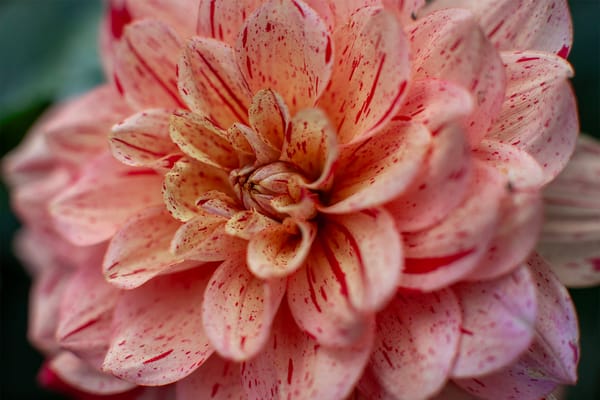Cornish gardens don’t follow a strict script. With the peninsula’s wild winds, rolling mists, and unpredictable rainfall, the rhythm of dahlia care demands both structure and a touch of coastal instinct. This month-by-month guide offers a gardener’s calendar—woven with practical tasks and an eye on the Southwest’s unique climate—to keep your dahlias thriving from tuber to bloom.
January–February: Rest, Reflection & Tuber Checks
In the quiet heart of winter, the work begins in the shed or cellar. Stored tubers deserve a monthly glance—a quick check for rot, shrivelling, or unexpected sprouts. Cornwall’s damp winters can creep into storage spaces, so keep ventilation dry and cool.
- Check and cull: Remove any tubers showing soft spots or mould.
- Revive if dry: Light misting or repacking in fresh vermiculite restores balance.
- Plan your palette: Order new stock early—Cornish-bred varieties often sell out fast.
March: Stirring Life — Waking Tubers & First Cuttings
With daylight stretching, it’s time to coax dahlias back to life.
- Sprout indoors: Set tubers in trays of barely moist compost, somewhere bright and frost-free.
- Take basal cuttings: As shoots emerge, snip them at the base for new plants bursting with vigor.
- Garden prep: Weed out winter debris and fork in compost—setting the stage for spring growth.
In Cornwall’s mild corners, this early start can put you weeks ahead of inland growers.
April: Groundwork & Guarding Against the Wind
April may tease with warmth, but frosts linger.
- Soil work: Enrich beds with compost or aged manure to lock in moisture and feed the soil.
- Harden off cuttings: Acclimatise young plants outside on mild days.
- Windbreaks: In exposed gardens, set up low hurdles or woven fences—essential defences in Cornwall’s breezy spots.
May: Planting Out — The Great Unveiling
By late May, the ground softens and frost fears fade.
- Planting: Space tubers or cuttings 60–90 cm apart for good air circulation—crucial in Cornwall’s damp climate.
- Stake from the start: Insert sturdy stakes before planting; shifting them later risks damaging roots.
- Mulch wisely: Keep moisture in and weeds out, but leave space around stems to fend off rot.
In western Cornwall, watch for the "last gasp" of late frost on inland ridges.
June: Growth Spurts & Watchful Care
June brings lushness—and challenges.
- Feed gently: Start low-nitrogen feeds (like liquid seaweed) to fuel growth, not excess foliage.
- Tie in: As stems surge, secure them softly but firmly—especially vital in wind-prone areas.
- Slug patrol: Rainy spells awaken slugs; regular checks prevent overnight disasters.
- Weed & water: Regular maintenance keeps competition and drought at bay.
July: First Blooms & Full Border Care
With the first flush of flowers, July is your dahlia’s debut.
- Feed for flowers: Switch to high-potash feeds to encourage bud set.
- Deadhead religiously: The more you cut, the more they bloom.
- Check after storms: Stakes, ties, and foliage can all suffer in summer gales.
- Pest patrol: Watch for aphids, capsid bugs, and thrips—early action is key.
On Cornwall’s coast, a post-storm rinse can save foliage from salt scorch.
August: The Glory Days — And Vigilance
Your borders are at their height—but so are risks.
- Deadhead twice weekly: Keeps colour coming and prevents energy loss to seeds.
- Pest & rot watch: Wet spells can bring mildew and rot—airflow is your ally.
- Water deeply, but wisely: Sandy Cornish soils may drain fast; clay-rich spots hold water—know your ground.
- Support check: Reinforce ties and supports after every blowy weekend.
September: Holding the Show Together
Autumn creeps in, but dahlias don’t stop.
- Feed lightly: Encourage the last waves of blooms.
- Trim back excess foliage: Improves airflow and fends off mildew.
- Weatherproof your beds: Mulch or improve drainage in heavy soils before storms arrive.
- Stake check: Don’t let a season’s growth topple now.
October: The Turning Point
The first frost paints the leaves black—and signals the shift to dormancy.
- Cut back to 15–20 cm: Whether lifting or overwintering in situ.
- Mulch or lift: Mulch well-drained beds deeply; lift tubers from heavy, wet, or exposed spots.
- Check crowns for rot: Especially important in Cornwall’s soggy autumns.
November–December: Storage, Division & Reflection
Now is the time for care—and planning ahead.
- Lift gently: Using a fork, avoiding tuber damage.
- Air-dry, dust, and store: Upside down for several days, dusted with sulphur or cinnamon, stored in breathable boxes.
- Label everything: Future you will be grateful.
- Divide: If needed, ensuring each piece has a viable eye.
Weather-Wise Tips for Cornish Gardens
- Rainfall: Drainage is non-negotiable. Raised beds, grit, and well-structured compost keep roots healthy.
- Wind: Always stake and consider planting in sheltered spots. Compact forms like ball and pompon dahlias stand up best.
- Microclimates: From the sheltered Roseland to breezy North Coast, adapt your overwintering and planting choices accordingly.
- Disease Management: Regular checks for mildew, rot, and botrytis keep your dahlias in top form—especially after wet spells.
Month-by-Month Snapshot
| Month | Key Tasks | Cornish Focus |
|---|
| Jan–Feb | Check tubers, plan orders | Dry storage vigilance |
| March | Wake tubers, basal cuttings | Propagate early, prep beds |
| April | Soil prep, harden off, windbreaks | Shelter is key |
| May | Plant out, mulch, stake | Frost watch, slug patrol |
| June | Feed, stake, pest watch | Support in wind, water carefully |
| July | Feed, deadhead, storm checks | Salt rinse after gales |
| August | Deadhead, pest patrol, support | Watch for rot post-rain |
| Sept | Deadhead, tidy, prep for wet | Airflow against mildew |
| Oct | Cut back, mulch or lift | Drainage vital |
| Nov–Dec | Lift, store, divide | Dry storage essential |
In Tune with the Seasons
By moving with Cornwall’s natural rhythms—adjusting to its soft springs, stormy summers, and damp autumns—you’ll nurture dahlias that stand tall, bloom boldly, and return with vigour year after year. The care you invest month by month doesn’t just grow flowers—it weaves your garden into the story of Cornwall’s landscape, where resilience and beauty have always bloomed hand in hand.











